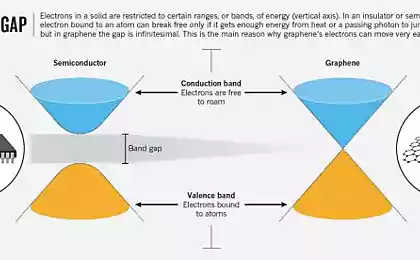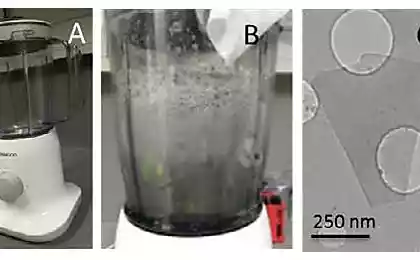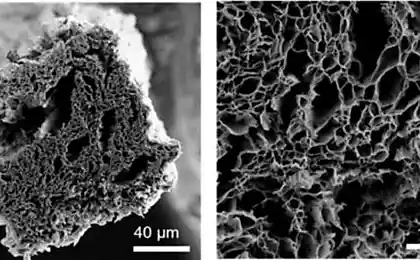454
Incredible optical properties of graphene — created 2D material with record levels
A group of scientists from the University of Surrey (UK) announced the creation of a 2D material with record figures. Multilayer graphene film with rectennas structure absorbs light in the 99% range from the middle infrared to ultraviolet. If such film is used in solar cells, it is possible to generate electricity even in diffuse light, reflected from the walls or from the illumination of household appliances. That is, the solar battery will work indoors. It cannot even be called a "battery" when the film is applied to the surface of walls and other objects. (Another question, what room is left then almost in pitch darkness even on a Sunny day)
Instead, the phrase "solar battery" in this case it is better to speak of "light-absorbing surface.
"The design of thin two-dimensional surfaces to absorb light in a wide range is the key to a large and growing number of applications, including energy, optoelectronics and spectroscopy — written by the developers of the material in the abstract of their scientific work. Although the light absorption in a wide range of possible high structures of carbon nanotubes with a height of about mm, but to achieve such a result in the nanometer structures is still not able to".
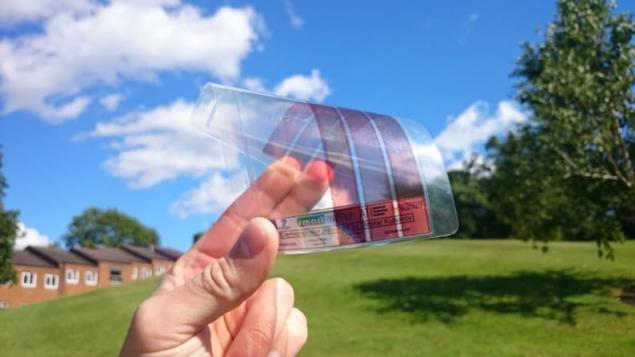
Invisible light-absorbing film, which generates a current, will find application in numerous devices of the Internet of things, smart clothes, wearable electronics, smart Wallpaper, household appliances, etc.
One of the authors of scientific work, Professor Ravi Silva (Ravi Silva explains that some insects (butterflies, moths, etc.). the eyes are made according to quite different principles. There used nanotechnology, that is, nanostructured surface. In this scale, these elements work as rectenna (rectifying antenna), that is, directly convert the energy field of the incident wave into DC power. The interaction of the wave length of 4 µm with a metal nanoantennas shown in the illustration.
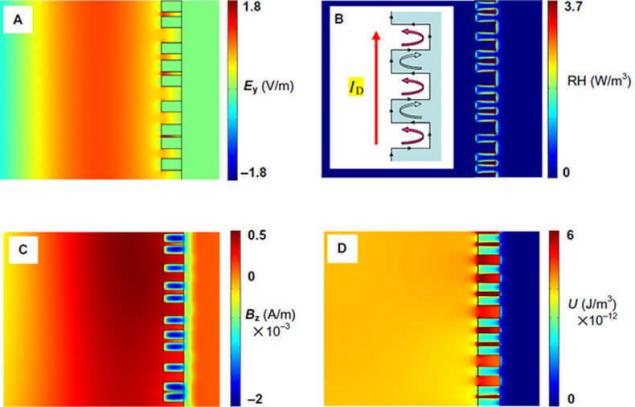
In box B in the illustration below — a comparison of the surface of the material with the eye of the butterfly Bicyclus anynana. In the illustration D shows the index of reflectivity of the created material (black graph).

"For many years people have been looking for, what applications of graphene can find widespread use," says Silva. — Finally we are approaching the point when such applications begin to appear. We did what was thought to be impossible: optimized the incredible optical properties of graphene". published
P. S. And remember, only by changing their consumption — together we change the world! ©
Join us in Facebook , Vkontakte, Odnoklassniki
Source: geektimes.ru/post/271848/
Instead, the phrase "solar battery" in this case it is better to speak of "light-absorbing surface.
"The design of thin two-dimensional surfaces to absorb light in a wide range is the key to a large and growing number of applications, including energy, optoelectronics and spectroscopy — written by the developers of the material in the abstract of their scientific work. Although the light absorption in a wide range of possible high structures of carbon nanotubes with a height of about mm, but to achieve such a result in the nanometer structures is still not able to".

Invisible light-absorbing film, which generates a current, will find application in numerous devices of the Internet of things, smart clothes, wearable electronics, smart Wallpaper, household appliances, etc.
One of the authors of scientific work, Professor Ravi Silva (Ravi Silva explains that some insects (butterflies, moths, etc.). the eyes are made according to quite different principles. There used nanotechnology, that is, nanostructured surface. In this scale, these elements work as rectenna (rectifying antenna), that is, directly convert the energy field of the incident wave into DC power. The interaction of the wave length of 4 µm with a metal nanoantennas shown in the illustration.

In box B in the illustration below — a comparison of the surface of the material with the eye of the butterfly Bicyclus anynana. In the illustration D shows the index of reflectivity of the created material (black graph).

"For many years people have been looking for, what applications of graphene can find widespread use," says Silva. — Finally we are approaching the point when such applications begin to appear. We did what was thought to be impossible: optimized the incredible optical properties of graphene". published
P. S. And remember, only by changing their consumption — together we change the world! ©
Join us in Facebook , Vkontakte, Odnoklassniki
Source: geektimes.ru/post/271848/
The beginning of the end: fossil fuels lost the race to renewable energy
The concept of a Tesla e-bike
